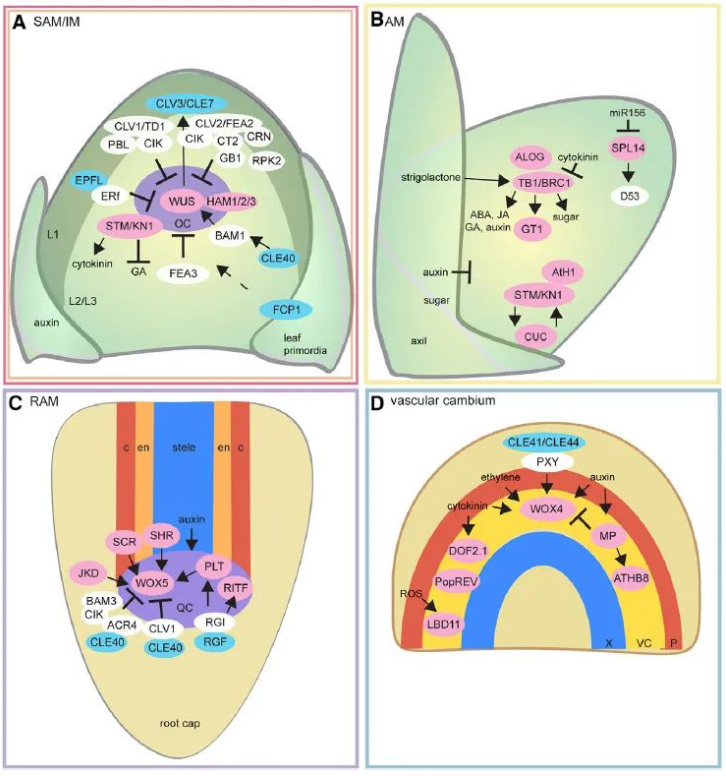On January 1, 2024, Molecular Plant published online a review article titled "Cultivating potential: Harnessing plant stem cells for agricultural crop improvement" by David Jackson's team at Cold Spring Harbor Laboratory. This article introduces the types of meristems in different parts of plants and their impact on crop yield, summarizes the regulatory pathways of plant meristem fate determination and development, and discusses and prospects how to use relevant knowledge to improve important agronomic traits.
The author first introduced the types of meristems in plants, such as shoot apical meristem (SAM), inflorescence meristem (IM), axillary meristem (AM), vascular cambium (VC), root apical meristem (RAM), etc., and their impact on yield.

The authors then systematically summarized the signaling pathways involved in the fate determination and formation of different meristematic tissues, such as the CLV (CLAVATA) regulatory pathway, a key pathway that determines the formation and maintenance of SAM and IM, and the key transcription factors, WUS and STM, as well as the effects of the upstream and downstream regulatory factors or targets, phytohormones, reactive oxygen species, and mechanical stresses involved in them in the process of plant stem cell fate determination and development. The article also introduces the similarities and differences in the development and regulatory pathways of SAM and IM.
All organs of a plant may be edible or usable parts, so the author focuses on the relationship between the formation and development regulation of different meristems and the improvement of crop agronomic traits based on the different meristems of plant organ origin. For example, fine-tuning the CLV signal affects the size of the inflorescence, thereby affecting the number of corn ears or tomato fruit size, using the apical advantage to regulate the number of plant side branches, improving the yield of corn or rice by coordinating the number of tillers and the number of inflorescence branches, and regulating the development of the vascular cambium to increase forest wood yield, etc.
The article finally discusses the application of utilizing the unique dedifferentiation and redifferentiation abilities of plant cells for asexual propagation or the production of virus-free seedlings in agricultural production. And combine these capabilities with transgenic technology, single-cell sequencing technology, etc. to study the application of plant development regulatory factors in the field of tissue culture and further use them in agricultural improvement potential and prospects.
Reference:
Lindsay, P., et al. Cultivating potential: Harnessing plant stem cells for agricultural crop improvement. Mol Plant. 2024, 17(1): 50-74.